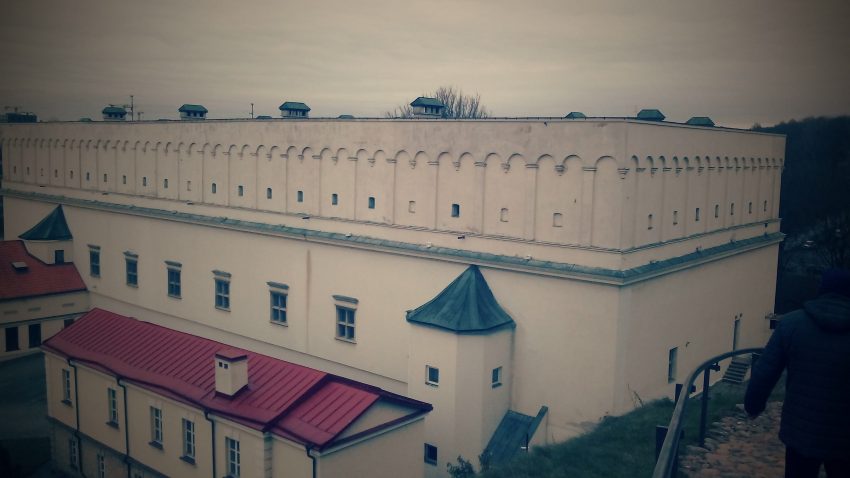
The organ, made by famous German master Adam G. Casparini in 1776, is one of the most valuable cultural monuments of Lithuania. The organ itself is the only surviving original 18th-century instrument in LithuaniaThe church has many Baroque frescoes. In the cupola, there is a multi-figural composition "Apotheosis of the Holy Spirit" (neo-Baroque, 19th century)The altars and the pulpit are lavishly decorated with round and relief sculptures and ornamentation All photos are copyrighted by Vladislav B. Sotirovic© Vladislav B. Sotirovic 2018
Continue Reading
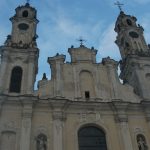
The Church of the Assumption is one of the Vilnius' most beautiful Baroque churches and most mature building of the Vilnius' Baroque schoolConstruction on the church began in 1695 and the final work was carried out by Vilnius' Baroque architect Johann Christoph Glaubitz (1700-1767) in 1750-1756The front façade is adorned by a domical rotunda vestibule, and two elegant towers with clocks All photos are copyrighted by Vladislav B. Sotirovic© Vladislav B. Sotirovic 2019
Continue Reading
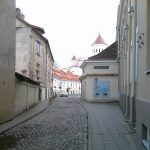
The Grand Duke of Lithuania Sigismund (1432-1440), who ruled briefly after the death of his brother Vytautas the Great (died in 1430), granted equal rights to the Russian Orthodox believers living in the capital-city of Vilnius - before long they came to constitute one half of the members of the city board and guild elders In the Middle Ages Vilnius (today Old Town) was increasingly multy-national as it was the case with the Grand Duchy of Lithuania as well. The city was, in fact, divided into four quarters according to the ethnic and religious belonging of its citizens: the German Quarter, the Russian Quarter, the Jewish Quarter, and the Tartar Quarter. Each of these city quarters had the main street named according to the ethnic belonging of their inhabitantsThe Russian Street in Old Town of Vilnius ends with the Russian Orthodox Cathedral (Sobor) of the Dormition of the Holy Mother ...
Continue Reading
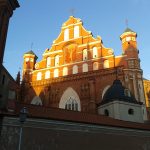
The main altar with Late Baroque forms, made from dark woodInterior of Church of St. Francis and St. BernardineWhile restoring the church, one of the largest mural paintings from the Late Gothic and Renaissance periods was discovered. They depict scenes from the Bible, Franciscan legends and symbolic imagesAll photos are copyrighted by Vladislav B. Sotirovic© Vladislav B. Sotirovic 2020
Continue Reading
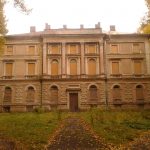
The historical building in Tyzenhauzų Str. in VilniusTyzenhauzų Str. building in VilniusTyzenhauzų Str. building in VilniusAll photos are copyrighted by Vladislav B. Sotirovic© Vladislav B. Sotirovic 2021
Continue Reading

The Town Hall hosted a court, archive, weapons depository, as well as a prison for artisans that had broken the law. Burgomasters also held meetings in the Town Hall, as did the Council of Merchants Since 1991, Vilnius Old Town Hall once again is functioning as a place for holding important events like art exhibitions, concerts, conferences, meetings, etcIn the Middle Ages, the Town Hall Square was a place where physical punishment was carried out. There were gallows and a scaffold nearby, where executions were carried outAll photos are copyrighted by Vladislav B. Sotirovic© Vladislav B. Sotirovic 2019
Continue Reading
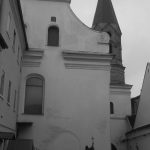
This is the first Evangelical Lutheran Church (Kirche) built-in Vilnius in 1555 on the initiative of the Chancellor of the Grand Duchy of Lithuania Nicholas Radziwiłł the Black. In front of the church, there is a monument erected to Martin Luther The church was rebuilt in 1662 and substantially reconstructed in 1738-1744. In 1944 it was closed down. In 1993 it was returned to the parishioners and renovatedThe church has a single nave and an original pentagonal shape. Its magnificent high altar was designed by German Protestant architect Jan (Johan) Krzysztof GlaubitzAll photos are copyrighted by Vladislav B. Sotirovic© Vladislav B. Sotirovic 2019
Continue Reading
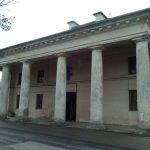
In 1780, Vilnius Bishop Ignacy Massalski settled in Verkiai. He commissioned Lithuanian architect Laurynas Gucevičius to reconstruct an earlier palace. The general plan and maintenance buildings were designed by Lithuanian architect Martin KnackfussThe ensemble encompasses the park of 36 ha. Situated on two terraces, the park consisted of two parts - the upper and the great park. A view of Vilnius and the Neris River is exposed from a steep slopeSince 1960 the ensemble belongs to the Lithuanian Academy of Science and is gradually renovatedAll photos are copyrighted by Vladislav B. Sotirovic© Vladislav B. Sotirovic 2021
Continue Reading

Town Hall Square has been a market place since very early times, and it today dominated by the Town Hall which was formerly a court, with the basement being used as prison cellsThe Town Hall back-side. The present building was constructed between 1785 and 1799 by the Classical architect Lithuanian Laurynas Stuoka-Gucevičius The square in front of the Town Hall is the venue for an annual three-day crafts market on the weekend closest to March 4th, St. Casimir's DayAll photos are copyrighted by Vladislav B. Sotirovic© Vladislav B. Sotirovic 2020
Continue Reading

Tour № 1 – Šventaragis ValleyCathedral Basilica of St. Stanislaus & St. VladislausCathedral Basilica of St. Stanislaus & St. Vladislaus (inside, including the Chapel of St. Casimir, the Chapel of Deportees, the Gasztołd Chapel, the Royal Chapel, St. Wladislaw/Vladislaus/Ladislav Chapel, High alter, Memorial plague to the Grand Duke of Lithuania Vytautas Magnus, the Sapieha Madona’s picture, etc)Cathedral Basilica Bell TowerRoyal Palace of Lithuania (the Palace of Grand Dukes of the Grand Duchy of Lithuania)Upper CastleUpper Castle’s West (Gediminas) TowerOld Arsenal – Museum of Applied ArtNew Arsenal – Lithuanian National MuseumMonument to King Mindaugas (1236-1263: Crowned King on July 6th, 1253)Monument to Lithuanian Grand Duke Gediminas (1316-1341: the founder of Gediminian-Jagiellonian ruling dynasty)Tour № 2 – Vilnius University & Monastery QuarterVilnius University – Historical Campus (est. 1579)Vilnius University – the Bronze door of the Central LibraryVilnius University – Historical Campus (inside, including 12 university’s courtyards, Domus Philologiae, Smuglevičius Hall, White (Observatory) ...
Continue Reading
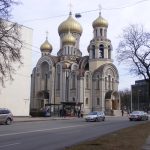
It is one of the most attractive Russian Orthodox churches in Vilnius: the exterior is a profusion of shining onion-shape domes; but the interior is remarkably serene. The interior's simplicity is interupted only by an elaborate iconostasis The internal space is created by two huge pairs of parallel semi-circular arches, intersecting at the top under the central dome which is also the main source of lightA panel on the right of the iconostatis depicts the two saints, both from noble families in the Middle Ages, to whom the church is dedicatedAll photos are copyrighted by Vladislav B. Sotirovic© Vladislav B. Sotirovic 2020
Continue Reading
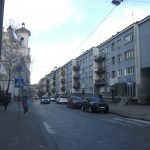
The Górecki estate in Dominikonų St. 15 is a two-storey Gothic house. It was built on this site in the late 15th or early 16th century. In 1649 it was bought by Vilnius UniversityZawisha estate is known since late 16th or early 17th century. It was renovated in the late 18th century. The façade is strictly symmetrical, done in the style of early Classicism. Renaissance vaults have survivedDominikonų Street is dominated by the Roman Catholic Church of the Holy Spirit and the Dominican Monastery (1501)All photos are copyrighted by Vladislav B. Sotirovic© Vladislav B. Sotirovic 2020
Continue Reading
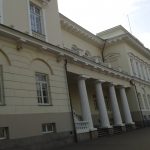
The main façade of the Presidential Palace (Prezidentura) in Vilnius at Simonas Daukantas SquareThe presidential coat-of-arms is adorning the entrance to the President's Chancellery on University StreetThe Inner Courtyard of the Presidential Palace - the palace of the President of the Republic of Lithuania since 1997All photos are copyrighted by Vladislav B. Sotirovic© Vladislav B. Sotirovic 2018
Continue Reading
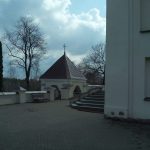
The church and Vilnius Calvary are an expression of gratitude to God for the liberation in 1661 of Lithuania from the Russian EmpireIt is the second oldest and once the most famous Calvary in Lithuania, revered by pilgrims and processions of believersThe late Baroque church was rebuilt in the 18th century. The central nave is decorated with 18th century mural paintings, the sacristy - with 18th century stucco relief worksAll photos are copyrighted by Vladislav B. Sotirovic© Vladislav B. Sotirovic 2021
Continue Reading
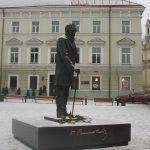
A monument to dr. Jonas Basanavičius in Vilnius in front of the building of the Lithuanian National PhilharmonicDr. Jonas Basanavičius chaired the session of Lithuanian Council that adopted the Act of Independence of Lithuania on 1918-02-16. He was the first to sign the Act of the Proclamation of the Lithuanian IndependenceBalancing between Lithuanian and Polish interests, he refused to participate in the opening of the Polish Stefan Batory University (today Vilnius University)All photos are copyrighted by Vladislav B. Sotirovic© Vladislav B. Sotirovic 2020
Continue Reading
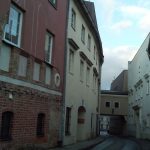
A former Gothic façade that was uncovered at Karmelitų Str. around Rūdninkų Square in the Old Town of VilniusThe back-side façade from the inner courtyardThe back-side façade from the inner courtyard. The house is located on the territory of WWII Large Jewish GhettoAll photos are copyrighted by Vladislav B. Sotirovic© Vladislav B. Sotirovic 2020
Continue Reading
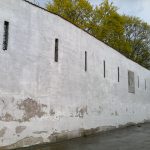
It was not until 1503 when Grand Duke of Lithuania and King of Poland Alexander Jagiellon granted a privilege that the construction of the wall began. The year 1522 is considered to mark the end of the construction, when Grand Duke of Lithuania Sigismund the Old exempted the residents of Vilnius from the duty of keeping guard at the castle and ordered 24 guards to be posted at the city gatesThe length of the defensive wall was 2,5 kilometres having 10 gates. The wall surrounded the territory of today's Old Town, approximatelly 100 hectars. The foundation of the defensive wall was built of stone, and bricks were mainly used at the level of loopholes and higher. The was was adapted for defence with gunpoweder-operated firearms Until the late-18th century, the Vilnius defensive wall was frequently renovated. The wall served for the last time in 1794 during the uprising led by ...
Continue Reading

Monument to the Gaon of Vilnius Elijah ben Solomon Zalman (1720-1797) called "Jewish Saga". The monument is located on the place where he lived. The house was destroyed during WWII and it was not restored. Nearby the monument there is a memorial plaque in Lithuanian and Hebrew on a building at Žydų (Jewish) Street Antokolski Street in Vilnius Old Town's Jewish Quarter. In this street the famous 19th century sculptor Mark Antokolski lived in 1843-1862. It was here he created his first sculptors depicting the inhabitants of his native quarter, which later gained recognitionMėsinių Street in Vilnius Old Town. That was one of the longest and most important street in the Jewish QuarterAll photos are copyrighted by Vladislav B. Sotirovic© Vladislav B. Sotirovic 2019
Continue Reading
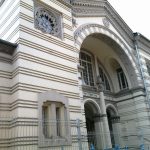
Choral Synagogue is the place of the only working synagogue and school "Tarahat Hakodesh" in Vilnius This synagogue is built in the Oriental Moorish style and is only survived one out of some 105 before WWII synagogues and other Judaic prayer housesThe exterior contains an inscription in Hebrew "A prayer house is sacred for all nations", and above the pediment the tablets with the Ten Divine Commandments are representedAll photos are copyrighted by Vladislav B. Sotirovic© Vladislav B. Sotirovic 2020
Continue Reading
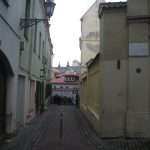
An idea to designate this small street a memorial site to writers began to be implemented in 2008Literatų Street No. 5: The Piasecki house built in the late 18th century. In 1823, having arrived from Kaunas, Adam Mickiewicz resided here at the invitation of the parents of his friend Kazimierz Piasecki. On the pediment of the entry arch a memorial plaque with a Polish inscription is set up; plaques with Lithuanian and Russian inscriptions are set below on both sides of the arch In the 19th century there were many bookshops on this street, hence its nameAll photos are copyrighted by Vladislav B. Sotirovic© Vladislav B. Sotirovic 2019
Continue Reading
 In 1986 the east winf of the Old Arsenal was restored. It houses the Museum of Applied Art and Design. The Old Arsenal enables the visitors to feel the ambience of the Renaissance Vilnius
In 1986 the east winf of the Old Arsenal was restored. It houses the Museum of Applied Art and Design. The Old Arsenal enables the visitors to feel the ambience of the Renaissance Vilnius  The building of the Old Arsenal was remodelled by Sigismund Augustus (second half of the 16th century) in the Renaissance style, mainly by adding a third floor (the attic), decorated in double arch niches. In was an enormous building, reputed to be the largest in the Polish-Lithuanian Commonwealth
The building of the Old Arsenal was remodelled by Sigismund Augustus (second half of the 16th century) in the Renaissance style, mainly by adding a third floor (the attic), decorated in double arch niches. In was an enormous building, reputed to be the largest in the Polish-Lithuanian Commonwealth  The Old Arsenal was badly damaged during the war with Russia in 1655-1661, and remained a virtual ruin until the late 18th century when in 1780 was rebuilt and burned down at the end of WWII
The Old Arsenal was badly damaged during the war with Russia in 1655-1661, and remained a virtual ruin until the late 18th century when in 1780 was rebuilt and burned down at the end of WWII




















